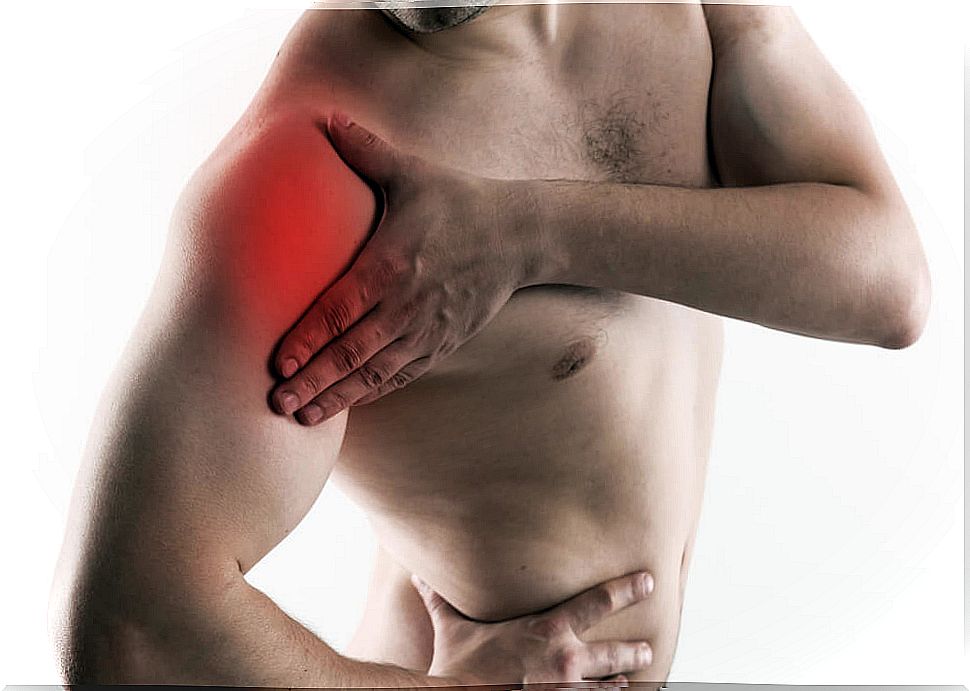Shoulder Dislocation: Causes And First Aid
Shoulder dislocation occurs when the bones that make up the joint move out of contact. The pain that this produces is intense due to the large number of nerves that exist in the area, which prevents the affected arm from moving. For this reason, it requires immediate assistance by a doctor.
According to the MSD Manual, “in more than 95% of shoulder dislocations, the humerus is displaced in front of the joint (anterior dislocation). But from time to time, it moves behind or underneath ”.
It is estimated that around 45% of shoulder dislocations are caused by an injury sustained during the practice of some sport or physical activity.
What else is there to know about shoulder dislocation?
The shoulder is a complex joint, made up of the humerus, clavicle, and shoulder blade. The rounded end of the humerus bone physiologically inserts into a socket in the shoulder blade, called the glenoid. This coordinated union of some bones with others, allows the correct mobility of the shoulder joint.
Shoulder dislocation occurs when this rounded end of the humerus pops out of its socket (the glenoid) and loses contact with it. If this loss of contact is only partial, we are talking about a subluxation.
When a shoulder dislocation occurs, many elements of the joint are damaged. First, the cartilaginous ring located at the end of the bones suffers great damage, but the tendons that are attached to the bones, the nerves and the blood vessels that supply the area are also affected.
What can be its causes?

Trauma-dependent causes
The main cause of a shoulder dislocation is trauma. That is, a blow or strong tension in the area. This produces a forced movement of the joint and the consequent removal of the bones from their site.
If the shoulder dislocation occurs in young people, it is very possible that throughout life new episodes will be suffered, the so-called repetitive dislocations.
This is a consequence of an increase in shoulder laxity. That is, the shoulder loses its physiological tension, becomes unstable and dislocations tend to recur.
Non-dependent causes of trauma
There are other causes unrelated to trauma that can lead to a shoulder dislocation. These types of dislocations are more common in men than women and are due to the following.
The shoulder joint is one of the most mobile in the body and this is thanks to the fact that the rounded part of the humerus (the end of the bone) behaves like a large ball that can rotate on its cavity, the glenoid.
The problem is that the glenoid is a very small socket in relation to the size of the “ball” of the humerus. This is what allows the great mobility of the shoulder.
However, for the joint to be stable, strong muscles and tendons are necessary to hold the bones together and hold them in place.
When the muscular system is not strong enough to maintain this stability, the bones stop contacting each other. Thus producing the dislocation through a process much more common in men than in women.
First aid

It is very important to call emergency services immediately. In addition to the intense pain that dislocation produces, there is also potential serious damage it can cause.
While medical attention arrives, it is very important to keep the damaged joint completely immobilized. No attempt should be made to reposition the shoulder, even when its dislocation is visible. Some tips that can help are:
- Apply cold to the area, to reduce inflammation and pain.
- If there are wounds, they should be cleaned and covered.
- Immobilize the joint with a makeshift sling.
- Once the joint is completely immobilized, transfer the person to a hospital.
Once in the hospital, the first evaluation that the doctors will make will be if there is a fracture. If so, a surgical intervention will be necessary.
In the event that there is no fracture, the joint should be repositioned as quickly as possible. To do this, sedatives and muscle relaxants will be administered, and then the medical staff will perform rapid and precise movements in order to reposition the bones.
recommendations
It is important to remember that, after a first dislocation, the chances of suffering it again increase because the force necessary to produce it will be less and less. This implies, in some cases, the need for an operation to reinforce the tension of the ligaments and thus prevent future dislocations.
As we already mentioned, around 45% of shoulder dislocations are caused by the practice of some sport. In these cases, sports rest is recommended to promote healing. Generally, after two or three weeks, physiotherapy begins and depending on the patient’s progress, the doctor will consider the progressive incorporation of physical activities.








